ESCAPE
This is mohair country, the southeastern home of the beautiful Angora goat
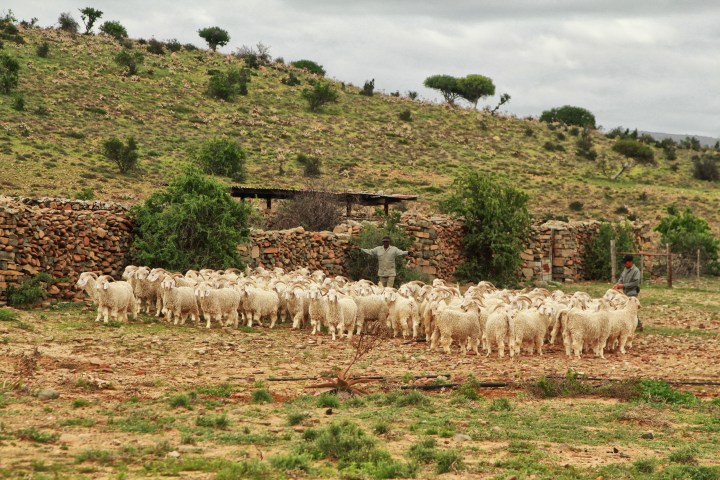
Wide streets, priceless sunsets, a sense of peace and goats with goofy looks and lustrous locks. Welcome to Jansenville.
Even at 9am on a weekday, Jansenville can hardly be described as a classic bustling metropolis. The little Eastern Cape village deep in the Noorsveld is all about wide streets, sunsets beyond money, and a sense of peace unheard of in the big city.
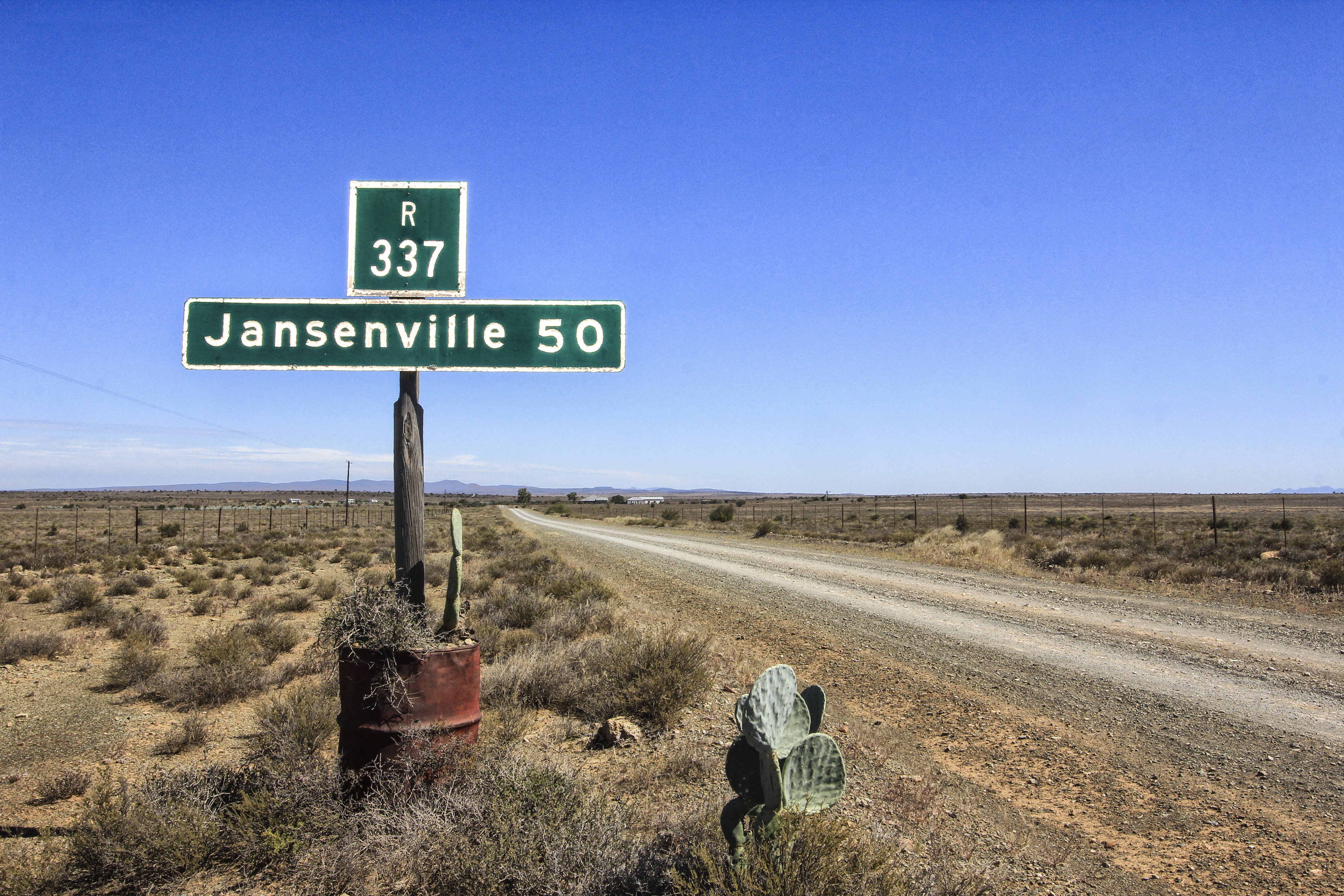
You are now entering Mohair Country… Image: Chris Marais
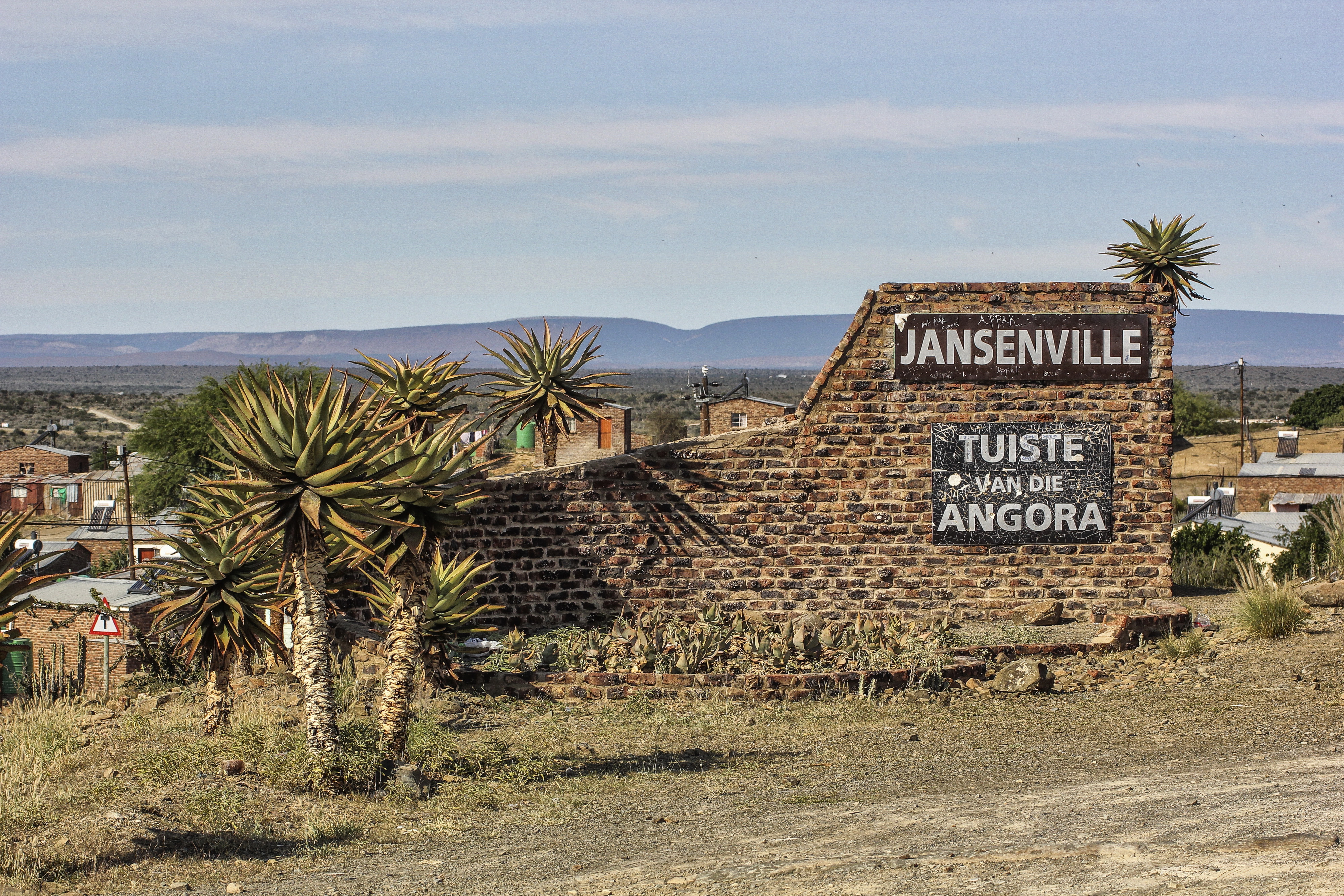
Jansenville, deep in the Noorsveld. Image: Chris Marais
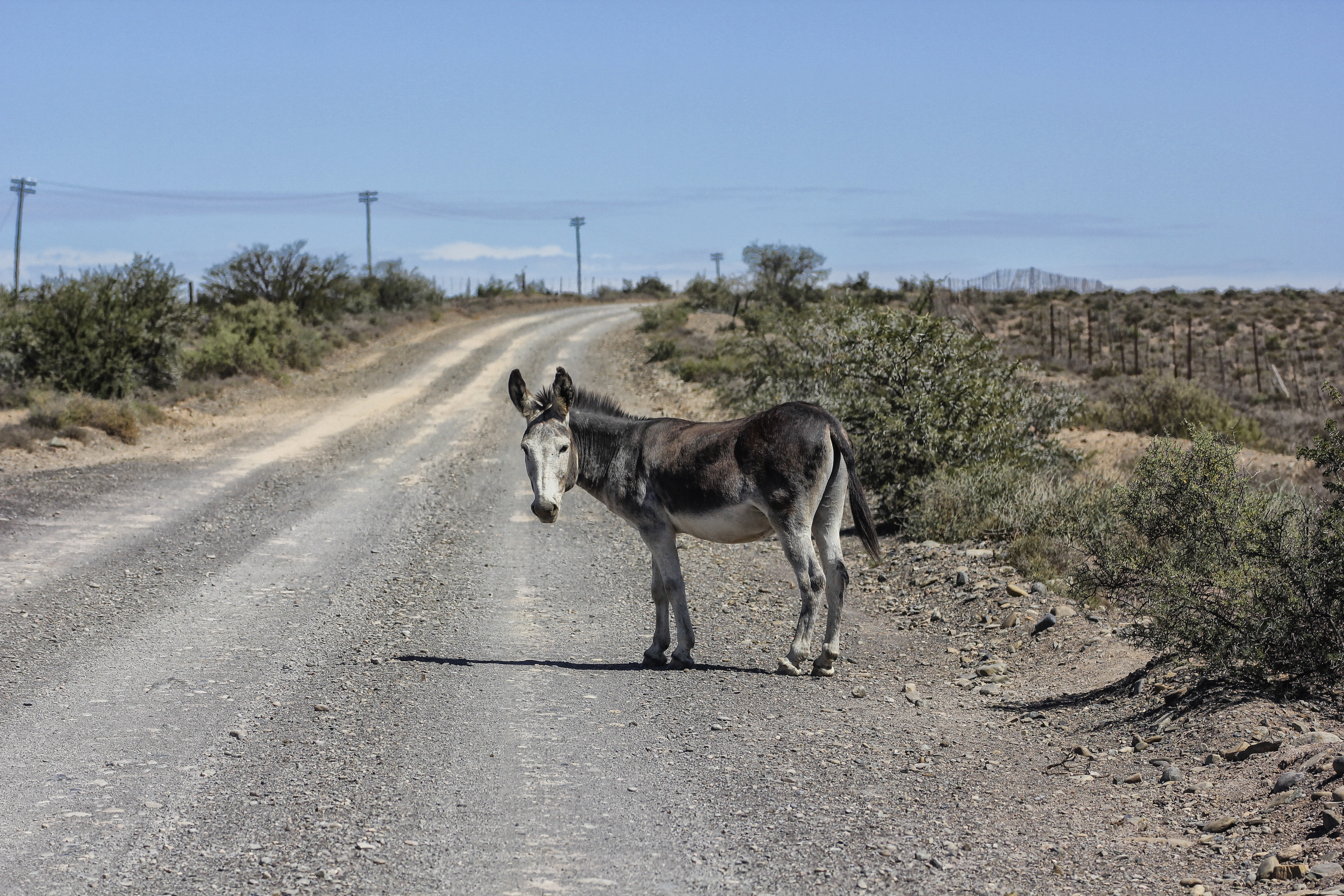
Mind the staring and immoveable donkeys as you go. Image: Chris Marais
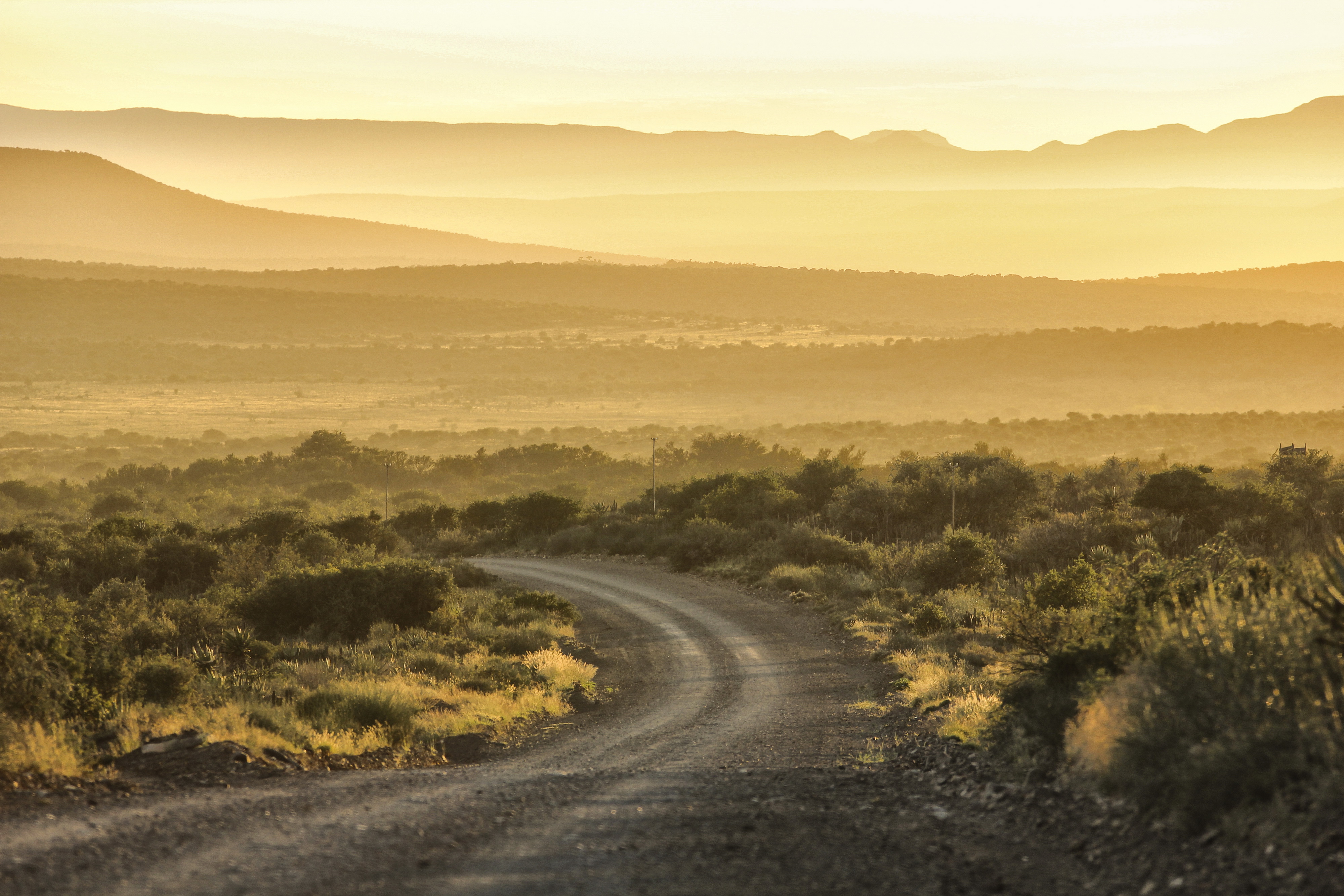
Sunset on a dusty Karoo road outside Jansenville. Image: Chris Marais
The few locals wandering the streets give a ragged cheer as the local Working on Fire squad comes jogging up the hill, singing in unison. There is a line of white bakkies outside the Heydenrychs general dealer. Everyone shops here, and it’s not hard to see why. They stock everything, from groceries to stationery, knives to scarves, ammunition to meat and farmers’ boots. Around the corner, on the broad R75 road linking Graaff-Reinet and the Noorsveld padstal in the north, with Die Ark padstal and Wolwefontein in the south, right next to the Mohair Experience shop, is the amazing Sid Fourie Museum.
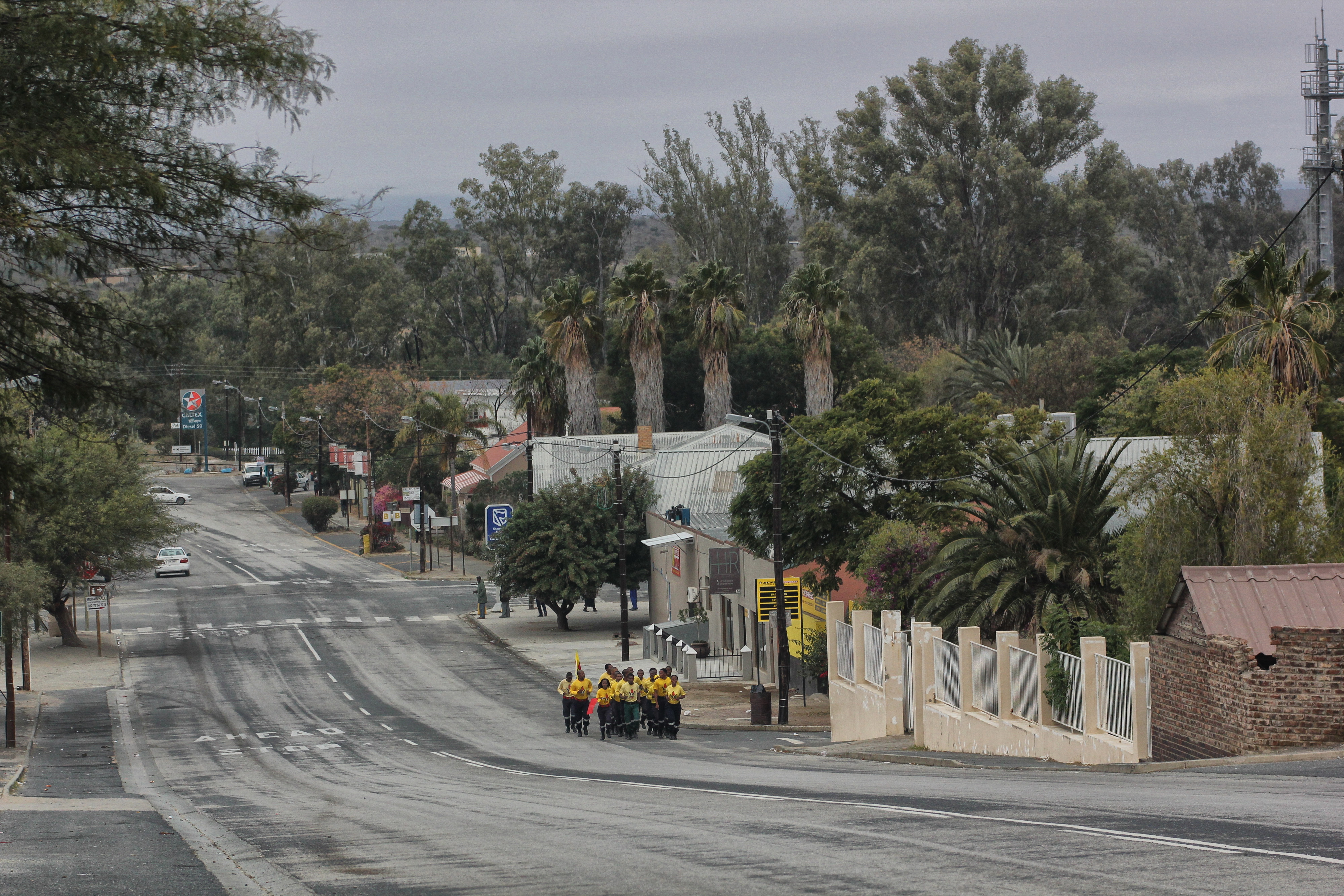
Early morning, main road, Jansenville, and the Working on Fire team is in training. Image: Chris Marais
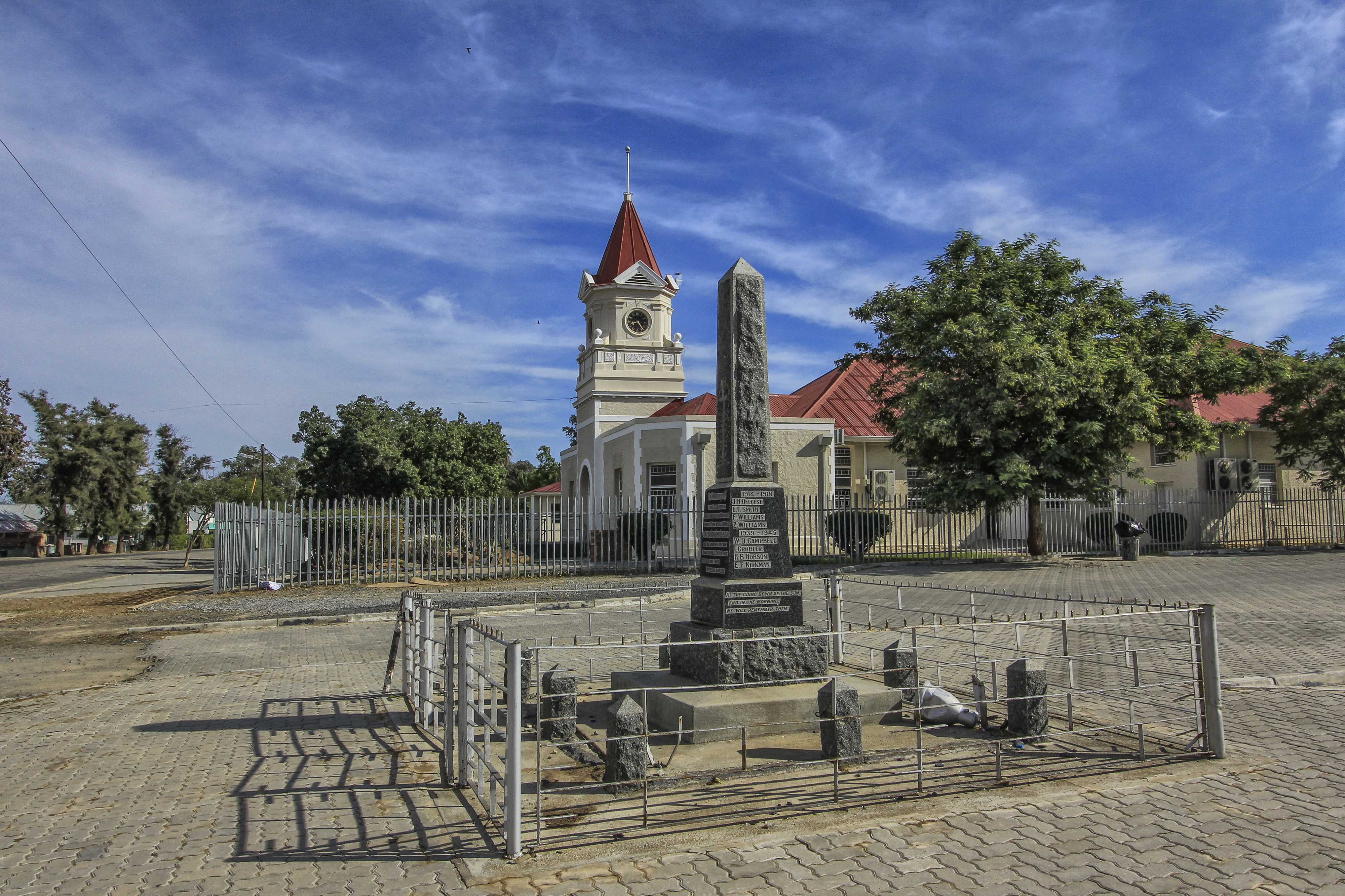
The Jansenville town hall, and a memorial to the local men who gave their lives during the two World Wars. Image: Chris Marais
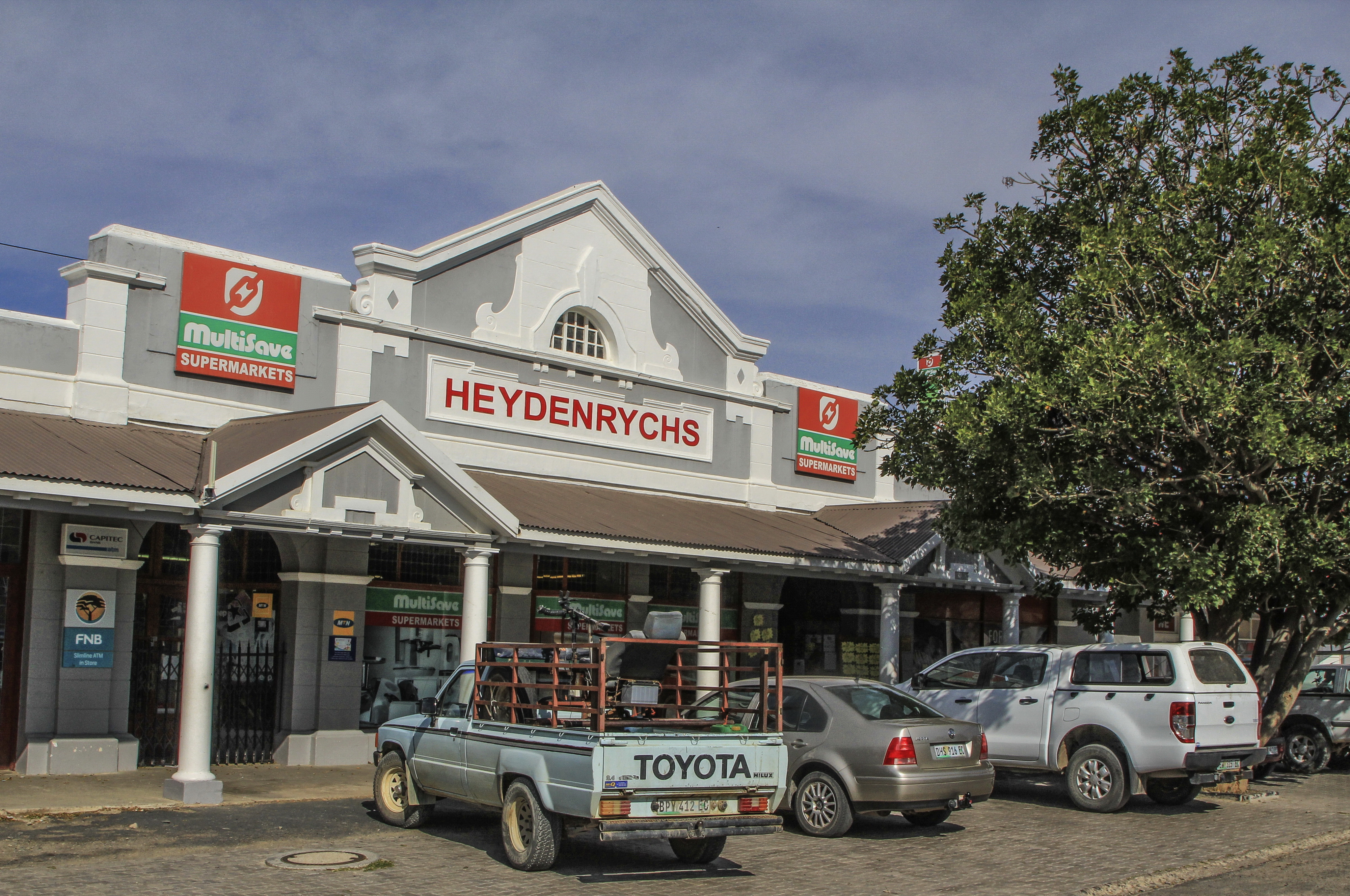
Everyone shops at Heyndenrychs. Image: Chris Marais
Jansenville’s most notable citizen
Described in various accounts as “somewhat eccentric”, the dapper Sid Fourie began his working life in the early 1900s as a transport rider who dug wells on the side. By his 18th birthday World War I had rolled around, so Fourie enlisted as a trooper with the 20th Mounted Rifles and then his life blasted into overdrive.
After the war, he returned and purchased the Jansenville Chronicle, editing it for 45 years. Fourie also had a 25-year career in civil service, including 15 years as the Mayor of Jansenville.
Uncle Sid, as everyone called him, was the man who issued drivers’ licences too. His test was simple, as retired local Angora goat farmer Elna van den Bergh recalls from her childhood.
“He would simply ask: Can you drive? If the answer was yes, he’d make out the licence.”
With the likes of Sid Fourie and a burgeoning mohair industry driving the fortunes of the little Noorsveld town, Jansenville soon had electricity, an airfield and a new hospital.
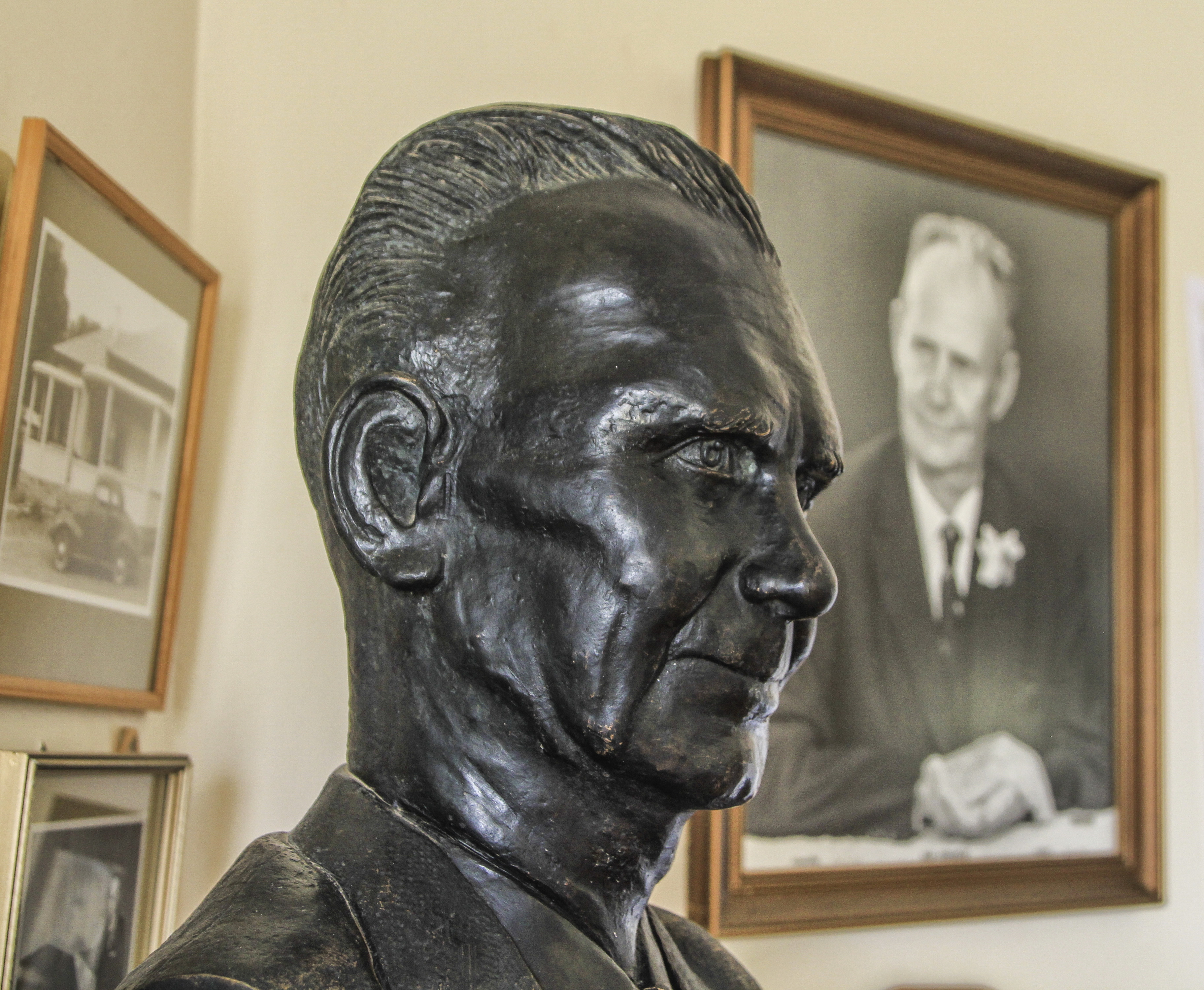
The famous and somewhat eccentric Sid Fourie. Image: Chris Marais
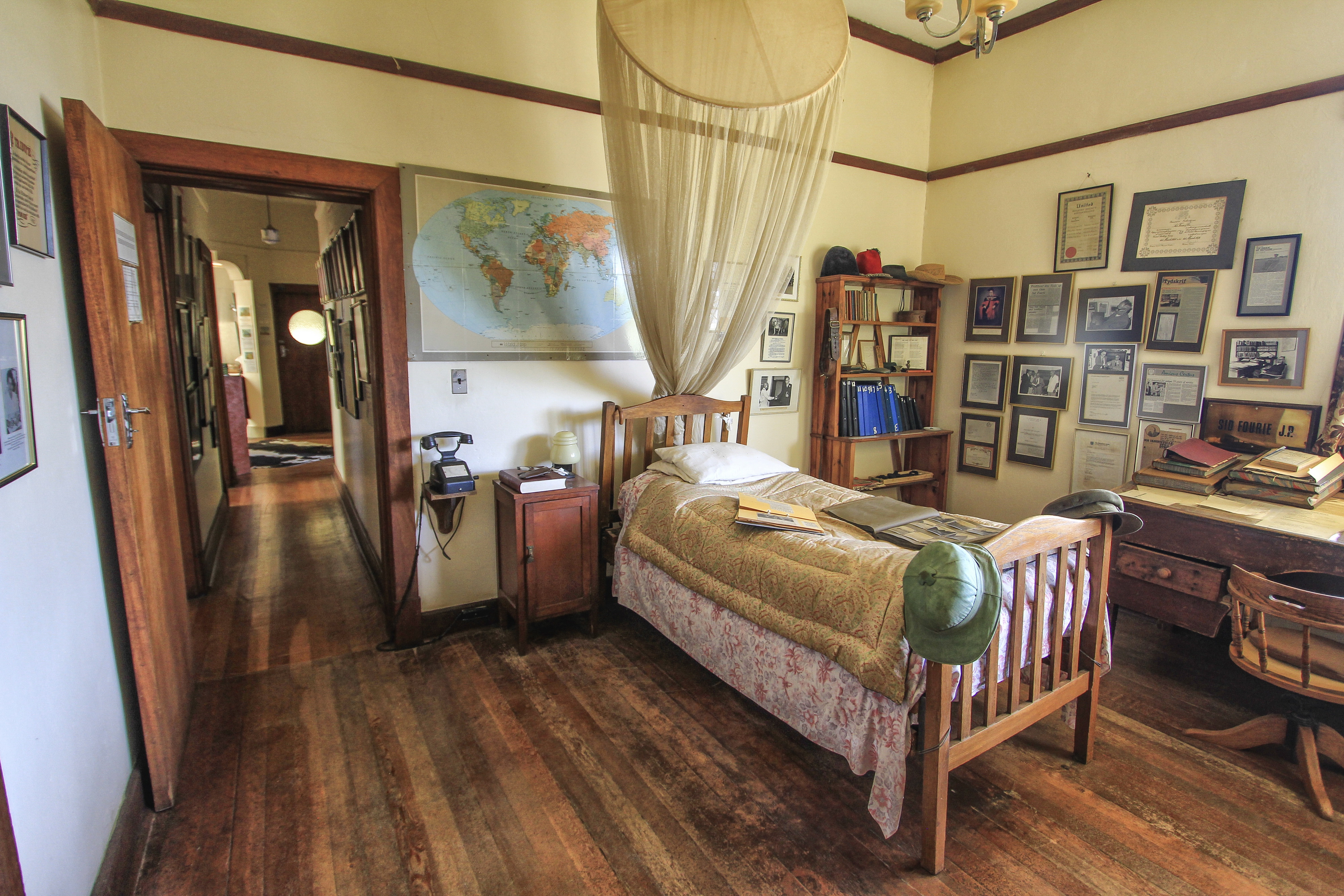
Sid Fourie’s bedroom, preserved down to the last detail. Image: Chris Marais
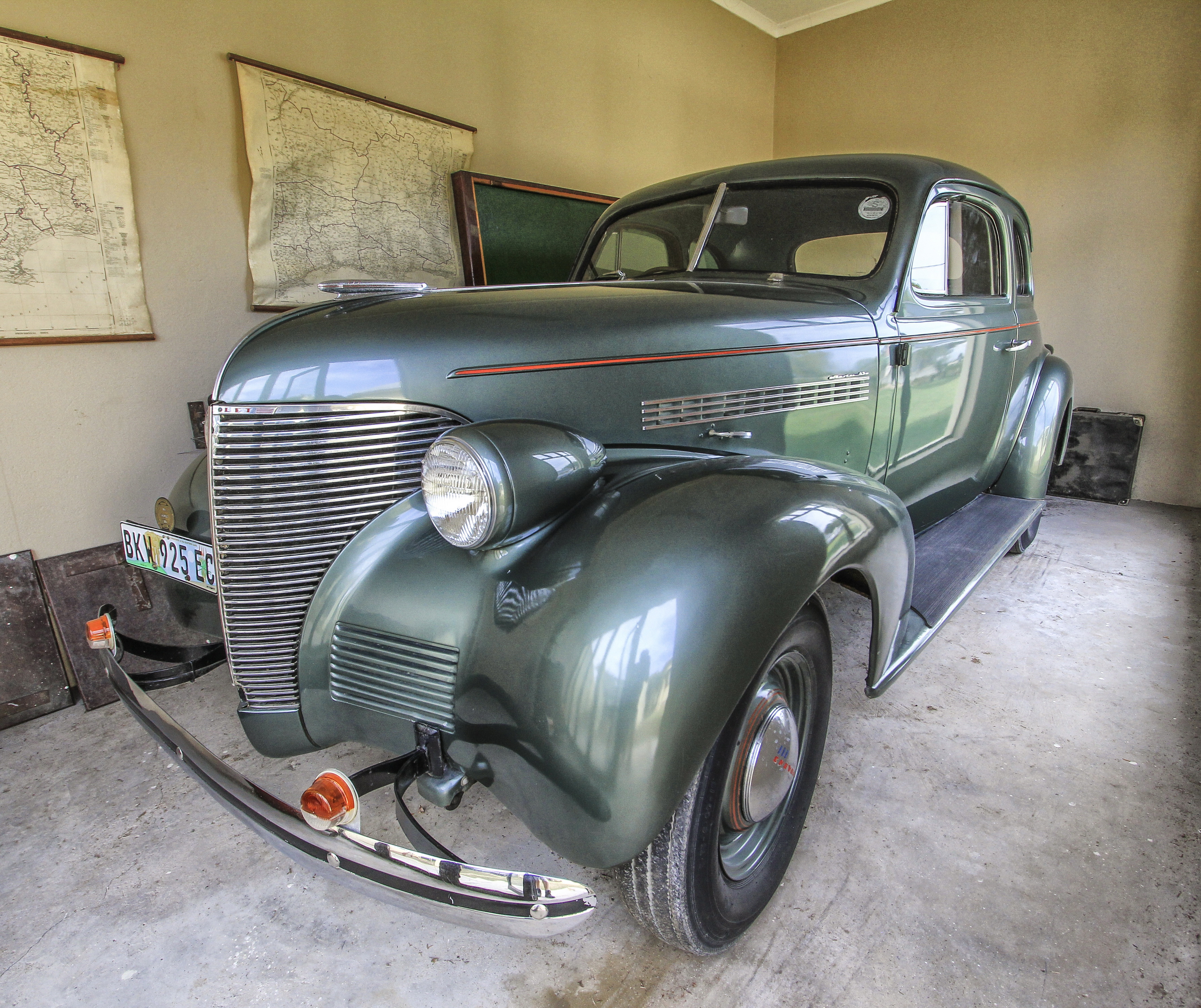
Sid’s old 1938 Chevrolet, still maintained in good running order and on display. Image: Chris Marais
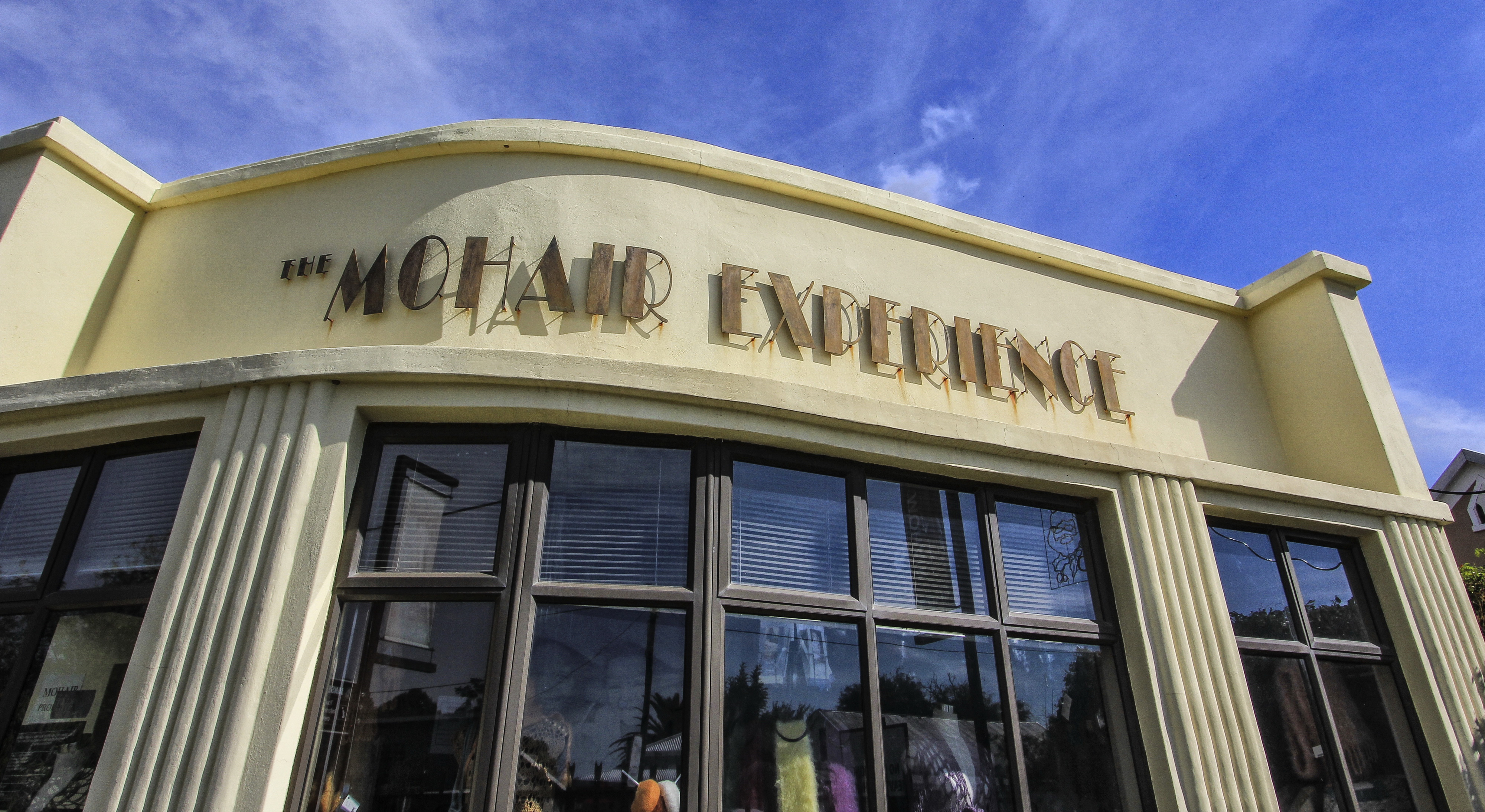
The Mohair Experience Museum next to the Sid Fourie Museum on the main street. Image: Chris Marais
His many overseas trips and offbeat lifestyle also brought a certain cosmopolitan flair to his Karoo environment. Locals say Sid Fourie always had a braai for breakfast and wore neckties around his waist instead of trouser belts.
He drove an old 1938 Chevrolet, which is still maintained in good running order and on display in a room that straddles the Mohair Experience hall and the Sid Fourie Museum. Sid Fourie bequeathed his house to the town of Jansenville but, it seems, his spirit did not love the fact that it was designated to be the local mayor’s office. He showed his displeasure from the grave by making mounted photographs fall regularly from the walls of his former dwelling, said local heritage champion Pauline van Zyl. So it became the Sid Fourie Museum and, since then, all has been tranquil in the great man’s home.
A state of euphorbia
But let’s first talk about the noors – and in fact all the spiky stuff you drive through on any road into Jansenville. The town is surrounded by a biologically forbidding terrain featuring thick stands of bitter aloes, sweet thorn and prickly pear.
Underpinning it all is the distinctive sweet noors (Euphorbia coerulescens) that grow only in the vicinity of Jansenville and nowhere else in the world. This barbed but blessed euphorbia is edible in times of drought (if chopped up by farmers), and creates protective habitats for grasses. Also, it has the agreeable habit of putting forth pretty yellow flowers in late spring and scattering nutritious seeds in the dry midsummer.
You can imagine Boer and Brit having at each other in this hostile terrain during the Anglo-Boer War. Here’s what General Jannie Smuts had to say about it in a speech he made in Jansenville long after the war:
“It’s 20 years ago that I was in this area, when I had to bypass your town. On that occasion, I would very much have liked to have called in for a chat and a cup of coffee, but for your highly-armed fort and impenetrable Noors.”
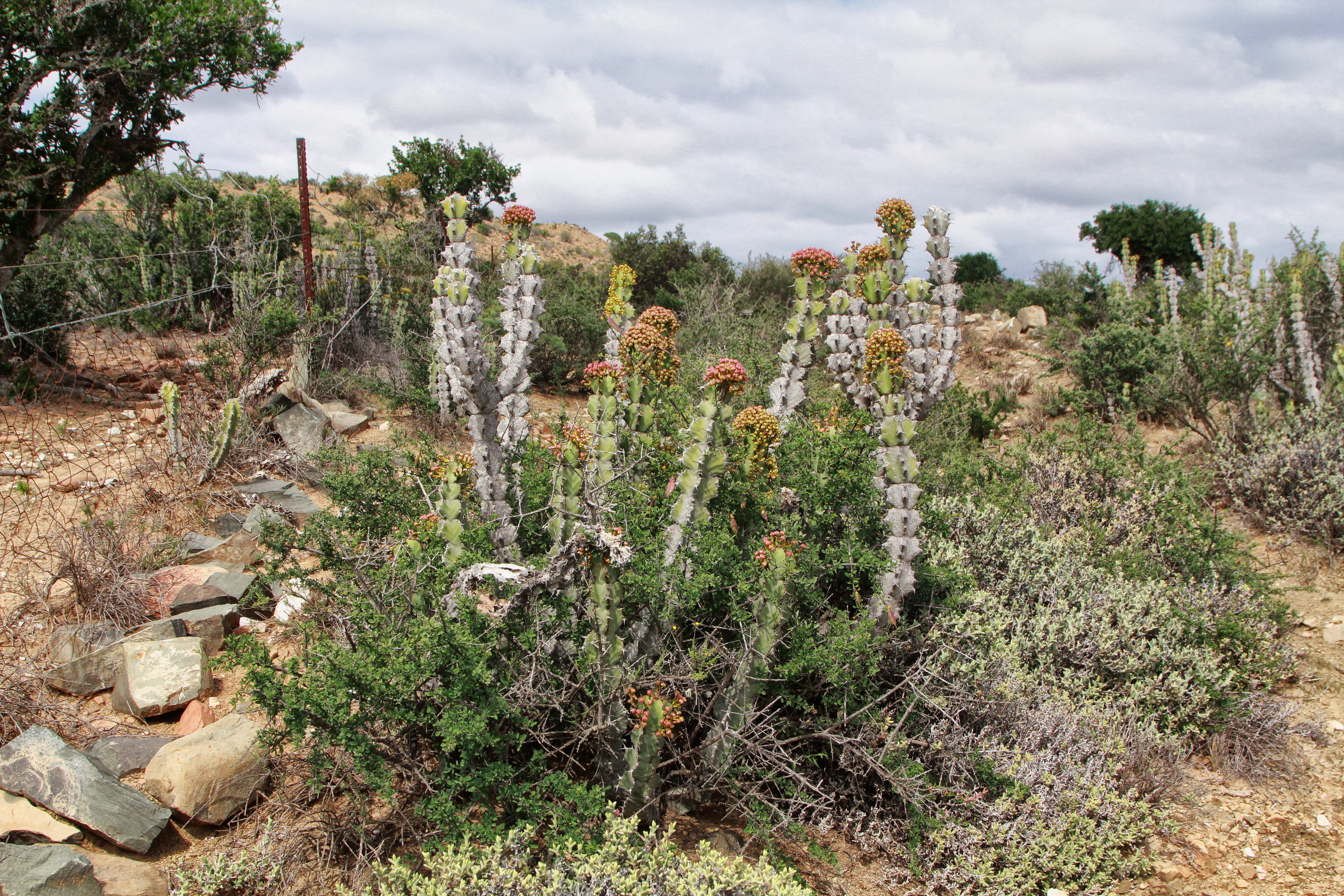
A thorny veld surrounds Jansenville, including the endemic euphorbia known as Sweet Noors. Image: Chris Marais
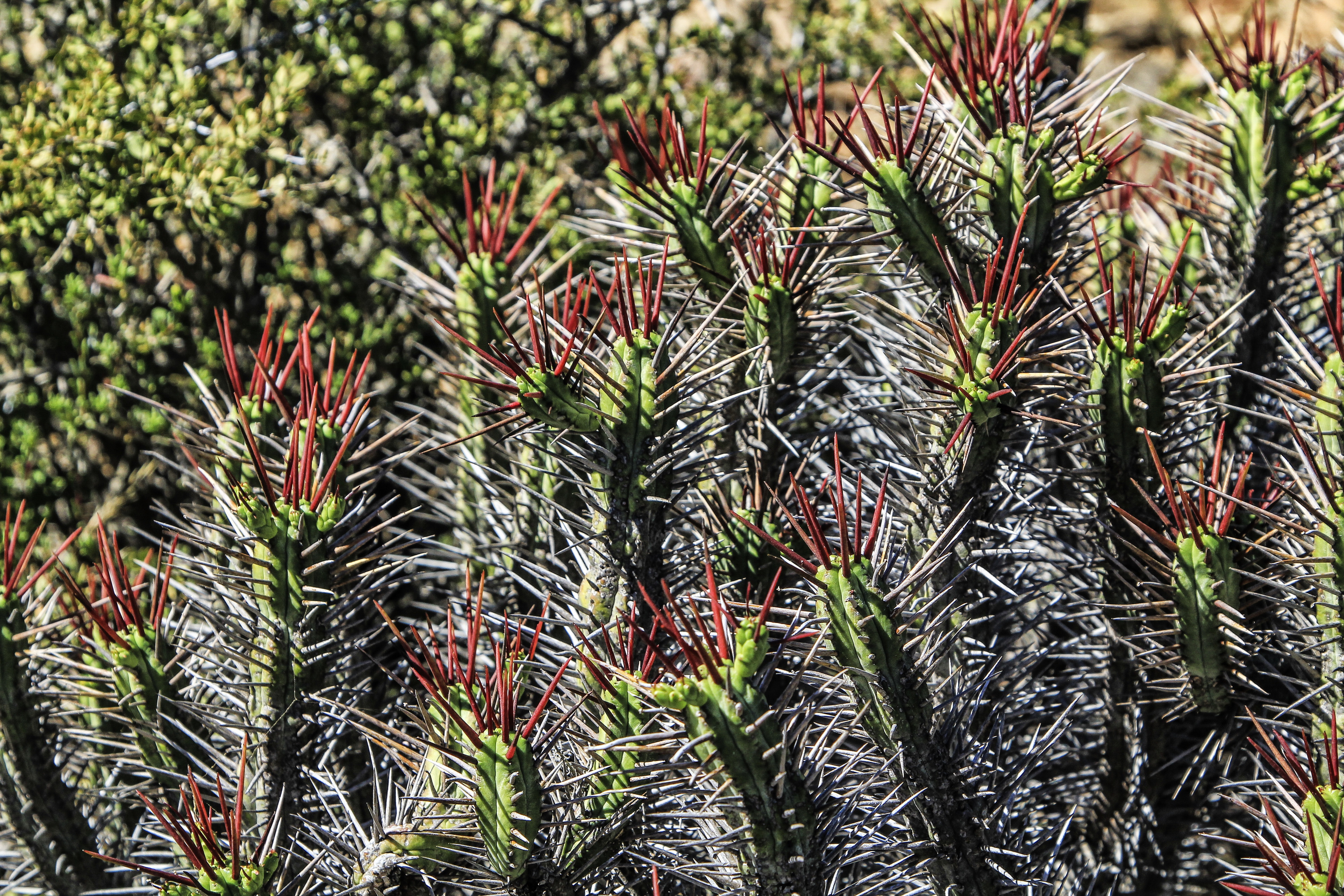
A combination of spekboom and noorsveld – that’s the terrain around Jansenville. Image: Chris Marais
In this bristly setting, you will find flocks of singular beasts – Angora goats with goofy looks and lustrous locks. Their magical fleece, mohair, has a sheen, a strength, a lightness and warmth found in no other natural fibre. The eastern Karoo is the perfect place for such a goat. The wide variety of bossies and thorn trees, interspersed with grasses, are excellent browse for them. The dry cold winters cut down on diseases and parasites. Most of South Africa’s 800,000 Angora goats are found in this area, a rough rhomboid sprawling between Willowmore, Steytlerville, Jansenville and Graaff-Reinet.
Being an Angora goat farmer requires nerves of steel and a weather eye for a dropping barometer. These goats are vulnerable to a combination of chill and wind or rain, especially within six weeks after shearing.
The mohair of Martyrsford
The next farm over from Ebenezer is Martyrsford, the oldest Angora goat stud farm in South Africa. William Carey Hobson founded the stud in 1871 and it has been passed down through the generations to current owners, Sean and Julie Hobson.
Of course, Sid Fourie pops up here too.
“Uncle Sid and my great-grandfather, Arthur Blake Hobson, used to sit on this very stoep and sip whiskey. Uncle Sid was a great supporter of the mohair industry,” says Sean Hobson.
Read in Daily Maverick: Mohair – a fibre named desire
He cannot take his eyes off the veld. In October 2021, the drought that had put Karoo farmers on their knees for more than six years finally broke. Now the land is carpeted in fresh growth, and the goats have a spring in their step.
“I can spend hours just being with them. Their fleece glows in the veld, and they are such characters, so intelligent, inquisitive and playful. They love playing king of the castle, jumping on cribs and mangers, having mock battles.”
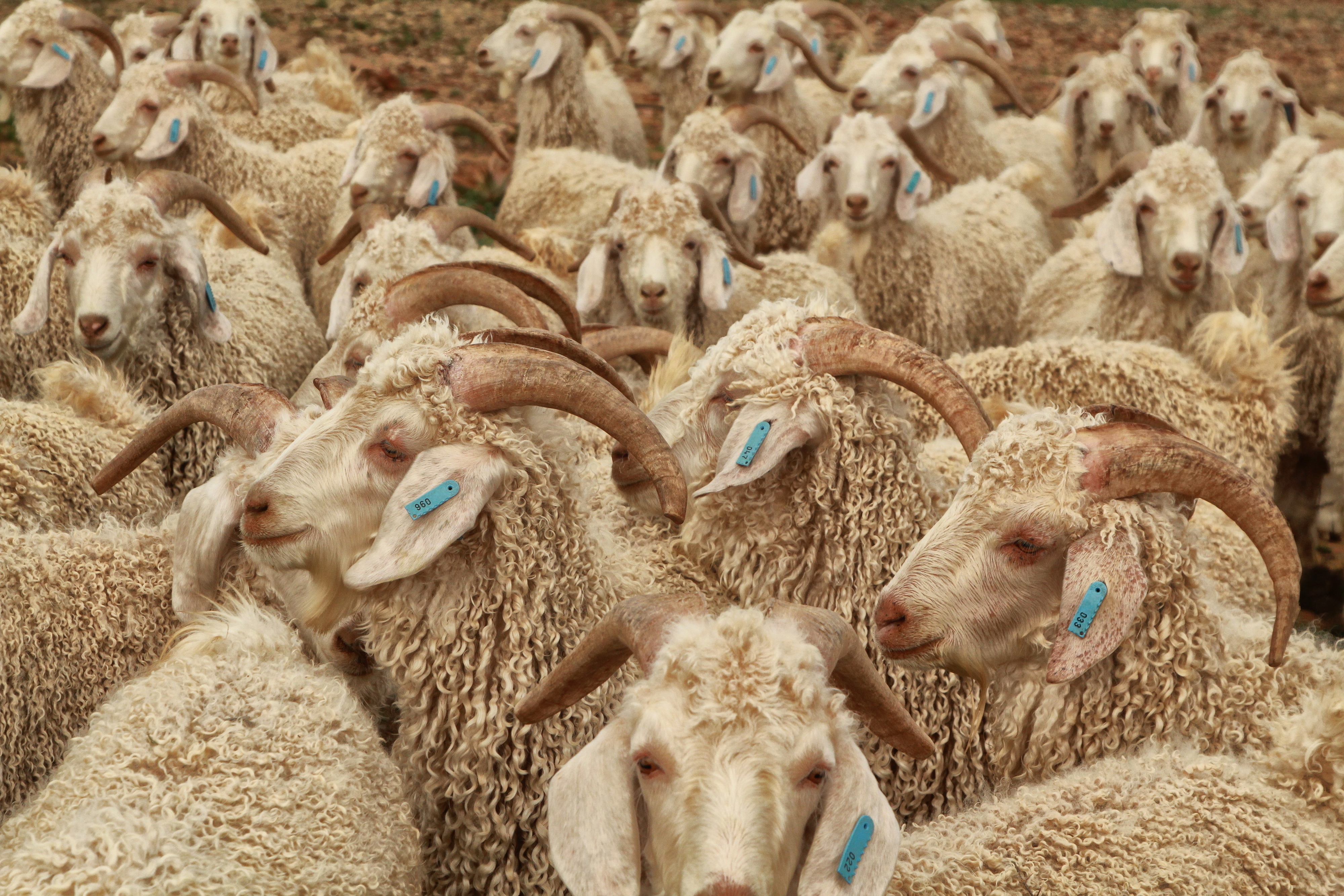
The Angora goats of Martyrsford Farm outside Jansenville.
Image: Chris Marais
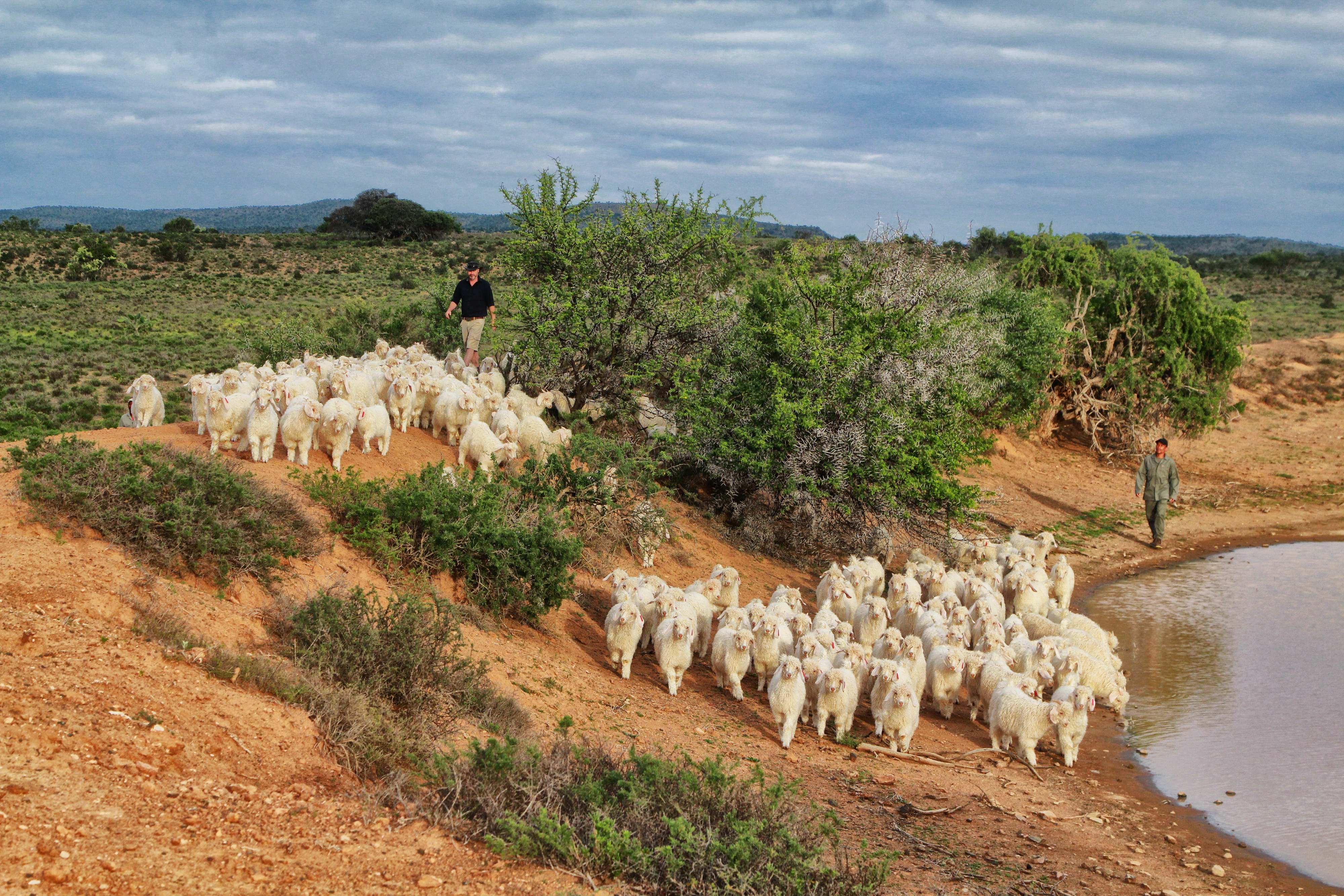
Herding the Martyrsford goats shortly after drought-relieving (no-one here says ‘drought-breaking’) rains. Image: Chris Marais
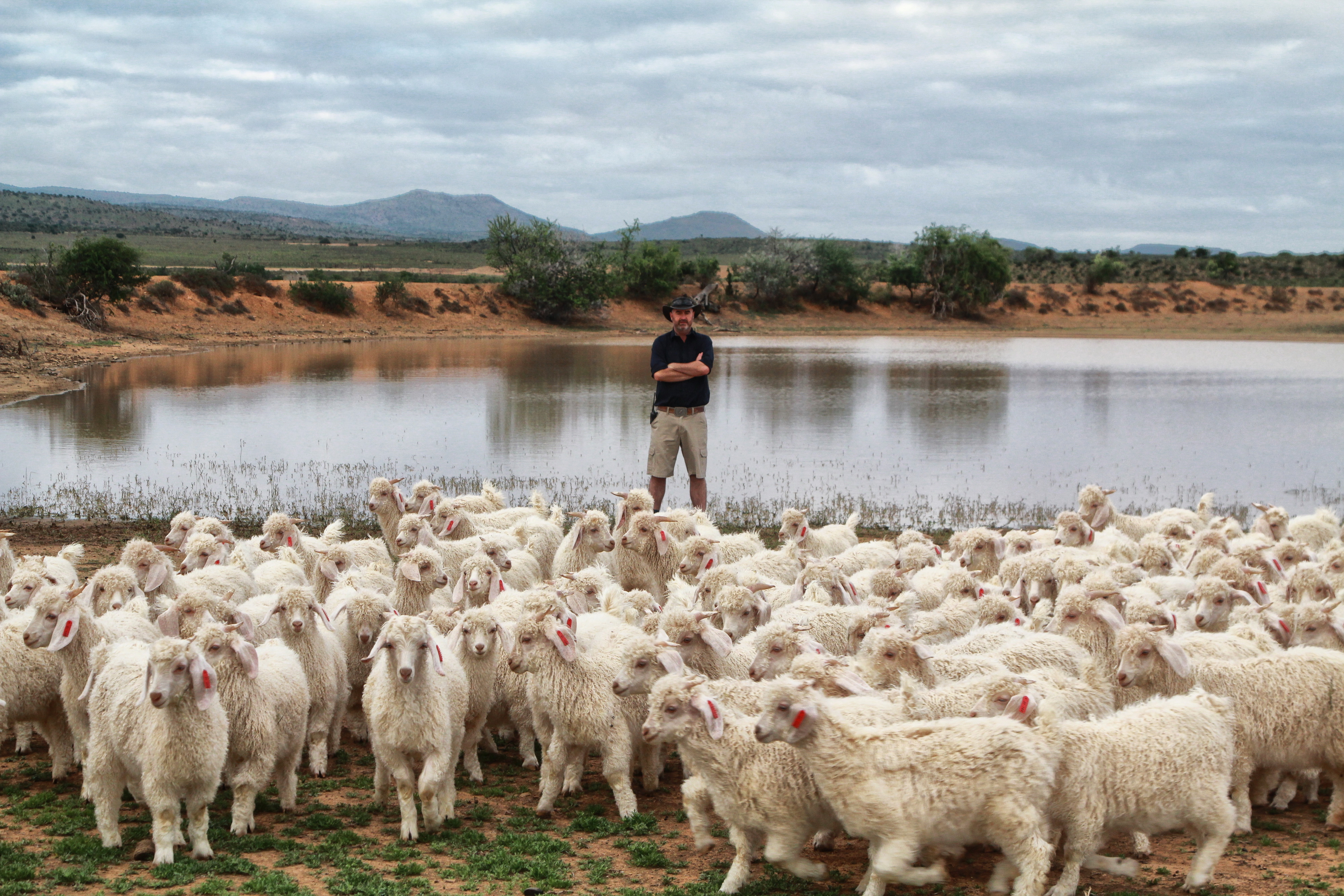
Sean Hobson of Martyrsford, the oldest Angora goat stud farm in South Africa. Image: Chris Marais
Sean Hobson takes a walk out to look at the young rams that will be put on auction in a few weeks, gently guiding them to water and the next camp with stockmen Paul Carolus, Pieter Bantom and Donovan Swartz. As they walk, they collect bunches of medicinal katjie drieblaar, a favourite folk remedy for colds and coughs.
“The Karoo is a truly humbling place,” says Sean. “Six weeks ago, there was nothing here. It was black, dead. We’d had 30mm of rain in 18 months. When I drove out into the veld, it physically hurt to look at it. I had no idea how we were going to carry on. We were living from one interlink load of pellets to the next.
“Then the rains came, and just look at this. It is such a balm for the soul.”
Drought is not the only hardship that Angora farmers have faced in the last few years.
PETA bites
In 2018, the organisation People for the Ethical Treatment of Animals (PETA) released a video purporting to show cruelty in the mohair industry. It was nothing short of catastrophic for the Angora farmers and fibre traders. Within 48 hours, 153 brand names like Zara, Gap and H&M had pulled all mohair products from their shelves. Prices plummeted. Jobs were lost.
“All credit to Lindsay Humphreys and Anlé Marais at Mohair SA,” said Sean. “They persisted and kept working with farmers and overseas buyers. It is critically important for the Eastern Cape. At least 25 000 people are employed in the industry.”
Ultimately, it resulted in a new system called the Responsible Mohair Standard. This has formalised procedures and systems, traceability, and carries guarantees of ethical handling and sustainability.
“Pretty much every Angora farmer already adhered to these principles anyway, but now it is official and audited, and the mohair market is booming again.”
Light and fluffy
Human hair grows by a centimetre a month. Angora goat fleece grows at double that – up to 25cm a year. To prevent them turning into horned fluffballs, the goats must be sheared every six months, each clip yielding 3.5kg of fibre per goat. The most prized fleece, though, comes from kids. It is ultra-fine, weighing only 800 grams per animal. South Africa, acknowledged worldwide as the source of the finest mohair, produces just over two million kilograms a year – half the global supply.
But it’s not just a matter of bringing the goats in from the veld and wielding the shears. The hair over their eyes must be trimmed regularly so they can see properly. Every six weeks, every goat is dipped and washed to get the dust off the fleece.
Most of the shearers are from Lesotho, the country with the second-largest mohair clip in the world after South Africa. Thousands of bales from the entire sub-region are funnelled through to Gqeberha (previously Port Elizabeth), the largest mohair handling facility globally.
This is where the bales are auctioned to buyers, mainly from Italy, China and the UK.
Foreign markets may fashion mohair into sophisticated items like bespoke suits and lightweight women’s clothing, but here in the Karoo the diamond fibre turns into beanies, scarves, socks, blankets and even duvets, all available from a good roadside padstal.
Because winter is coming, boet… DM/ML
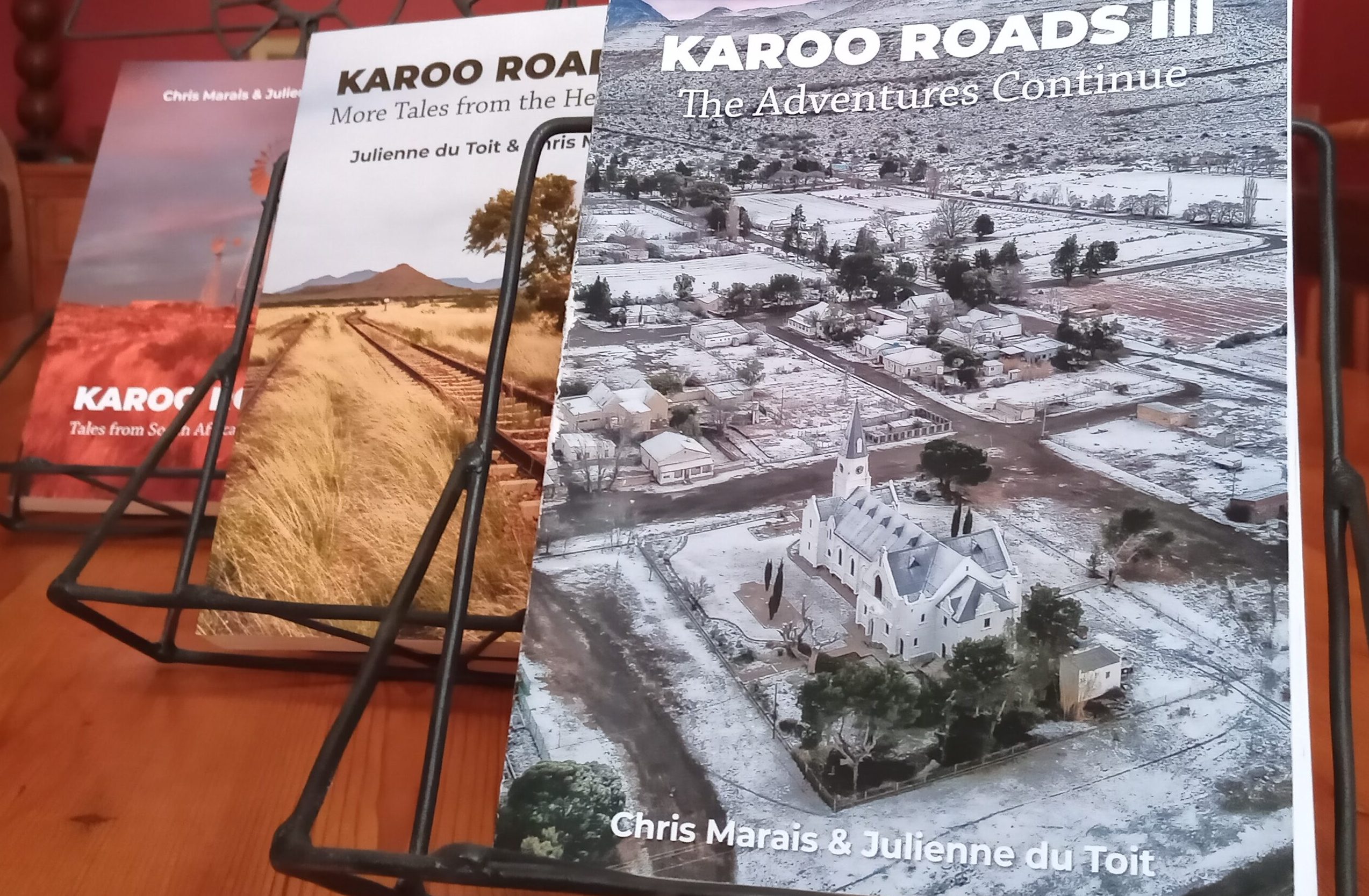
‘Karoo Roads’ Collection. Image: Chris Marais
This is an extract from Karoo Roads III – The Adventures Continue, by Chris Marais and Julienne du Toit. For an insider’s view on life in the Dry Country, get the three-book special of Karoo Roads I, Karoo Roads II and Karoo Roads III (illustrated in black and white) for only R800, including courier costs in South Africa. For more details, contact Julie at [email protected]

















 Become an Insider
Become an Insider
My mother, Almini Ferreira, grew up on the farms Warmkaros and Jericho in Jansenville district. Her mother, Tant Lettie Ferreira, later had a beautiful Victorian house in town, where one of her other daughters sold haberdashery from the business called “Rosette”. I remember lovely summer holidays in Jansenville – dry and dusty but now and then those lovely thunderstorms giving hope to farmers.
The farmers sound hardworking and caring and the goofy and lustrous coated goats sound fun and appreciative of their surroundings. And I love the description of Noorsveld as having “sunsets beyond money”.